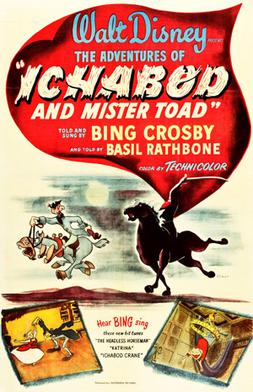So what's the story? One spring day, songwriter Roger Radcliffe's dalmatian Pongo tries to find love for his "pet" human. He finds it in a woman named Anita and her own dalmatian, Perdita. They marry and settle down in a London apartment. Later, Pongo and Perdy have puppies. 15 to be exact. One almost dies, but Roger revives it by rubbing its back with a towel (I'm assuming that's the one named Lucky) Anita's old school friend, Cruella de Vil, wants to buy the puppies from the couple, but Roger refuses because he doesn't trust her. She leaves, but twp thieves steal the litter later on. We find out later that they worked for Cruella and rounded up 84 other dalmatian puppies as well so she can make a coat out of them. The Pongos find out where they are thanks to the "twilight bark", a dog gossip line but also help out in finding lost dogs, and set out to rescue them. With the help of the Colonel, Mr. Tibbs and Major (a sheepdog, cat and horse), the Pongos find and rescue their 15 puppies but decide to rescue the other 84 as well. With the help of a Labrador later on, they decide to hide from Cruella by rolling in soot so that they look like Labradors. After a really exciting car chase scene, Cruella and her droogs wind up in jail, the dogs return home, and Roger and Anita decide to keep all 101 dogs, hence the title.
If I could choose a word that perfectly describes this movie, it's "cute". Like Lady and the Tramp, the story is told mostly from the dog's perspective, well Pongo's alt least since he's the narrator. It does, however, give some emphasis on the humans too like Roger, Anita, Cruella, the droogs, and even the Radcliffe's maid. Speaking of which, Cruella de Vil herself is a good villian. I find it funny how frail this woman really is, but that fur coat she always wears makes her looks threatening and massive. She's pretty insane too. My favorite scenes with her are when she first appears and Roger tries to drive her off with his music playing and her final scene when she chases after the dogs in a moving van in her car, which gets scarier and more intense the more the car is destroyed.
My favorite aspect of the movie is actually the music. There's only one song, sure, but the score itself is really where a lot of the charm, in my opinion, comes from. George Bruns' score is one of my favorites, if not my all-time favorite, in a Disney movie. It's just so lighthearted and bouncy that it really fits the tone and spirit of the movie. So it seems appropriate then that my favorite part of the score comes from the overture. In fact, these opening credits are really cool! Just watch them, they're the best in all the Disney movies. It's fun to watch, fun to listen too, it's just awesome!
One thing I found odd, though, was how over-the-top this world treats dogs. I mean Pongo and Perdie get married too with Roger and Anita, both dads are jumpy about the birth of the puppies, and even when they're stolen it makes front page news. Really? To be honest, that's where some of the humor does come from, so I guess I'll let it slide.
The majority of characters are typical. They're still likable, nice, and funny at times but don't stand out that much. It's the situations and reactions to said events are what make them enjoyable, sort of like watching a Droopy cartoon in that aspect. One character I really enjoy is Sgt. Tibbs the cat. He actually seems really compassionate and protective of the puppies when he's rescuing them. There's a scene where the droogs are about to bash the puppies heads but he puts himself in front of them to try and save them. That's awesome! Go Sgt. Tibbs! On the double! I wish I had a clip from Youtube to share, but one with just Sgt Tibbs' scenes are hard to find. Here's a model sheet to suffice.
This is also the first movie with that sketchy style of animation too which, to me, kind of brings the quality down a notch. Don't get me wrong, it's still really good fluid and solid animation and the characters still move and appear real, but those sketchy lines and the occasional construction lines that appear are a little bit of a distraction. It's like looking at the pencil tests. It still looks nice, but not exactly 100% complete. Even the backgrounds looked kind of sketchy. My guess is that this was from Sleeping Beauty's financial losses and that the studio had to cut costs somehow. There's still people out there that dig this style 100% too and I can understand why. Also, I found out that the animation in this movie was a team effort. Leading animators before stuck with one or two characters throughout a movie. Here, everyone worked on every character. Except for Marc Davis who solely animated Cruella.
And that's One Hundred and One Dalmatians. Even if it isn't as good as Lady and the Tramp or even as well animated, it comes close and I still like it ok. If I could point out one other thing about it before I end the review, it's that it's a film that knows what it is. It's not pretentious, it's not that fancy, it's just good old fashioned fun and I enjoyed watching it again. Not my personal favorite Disney movie but thanks to its clever moments, it's still worth a watch or two.




























